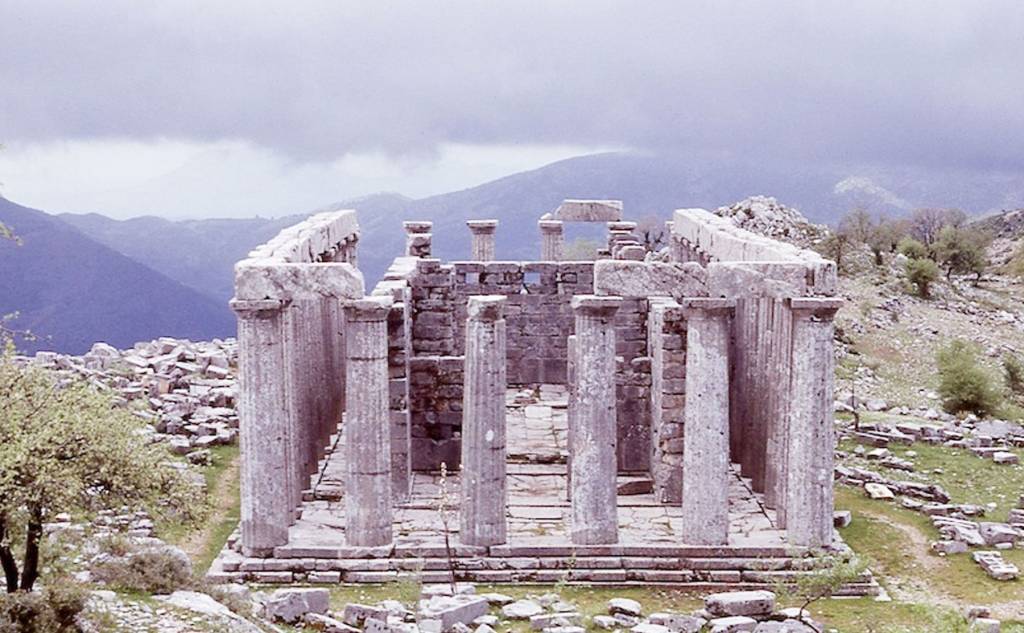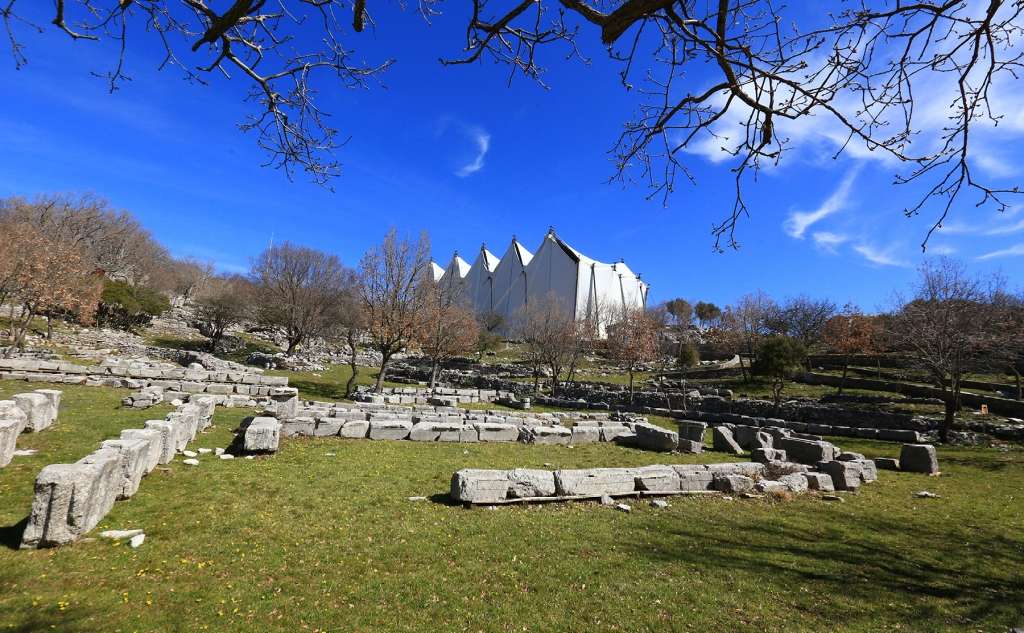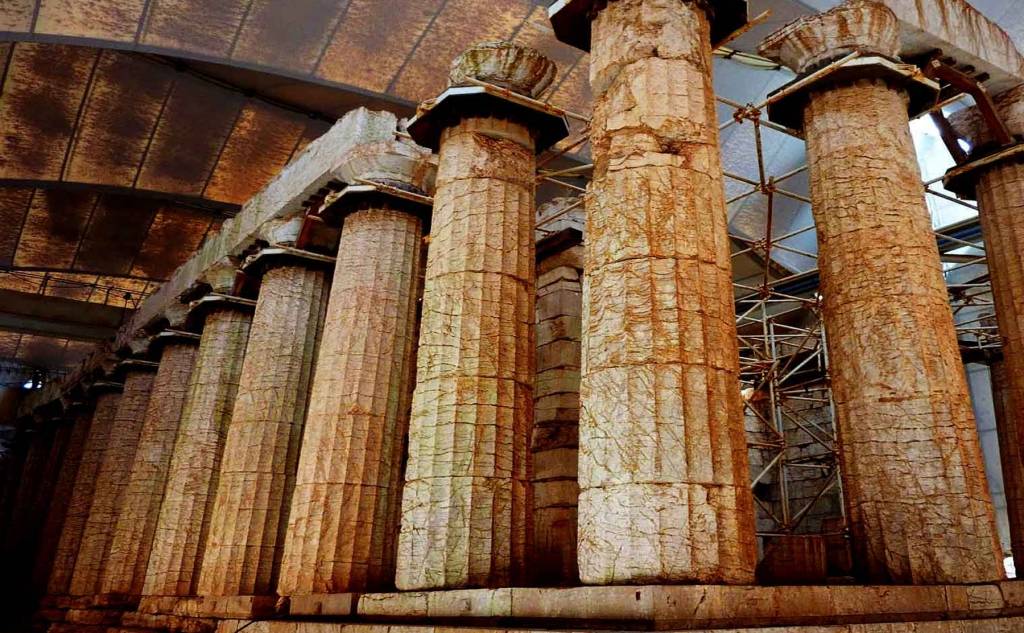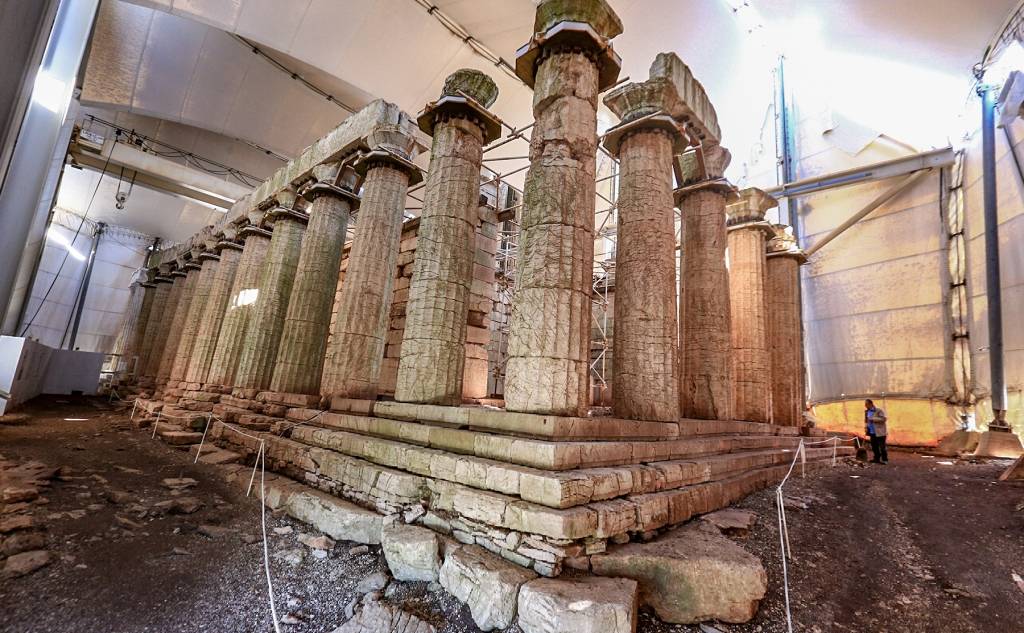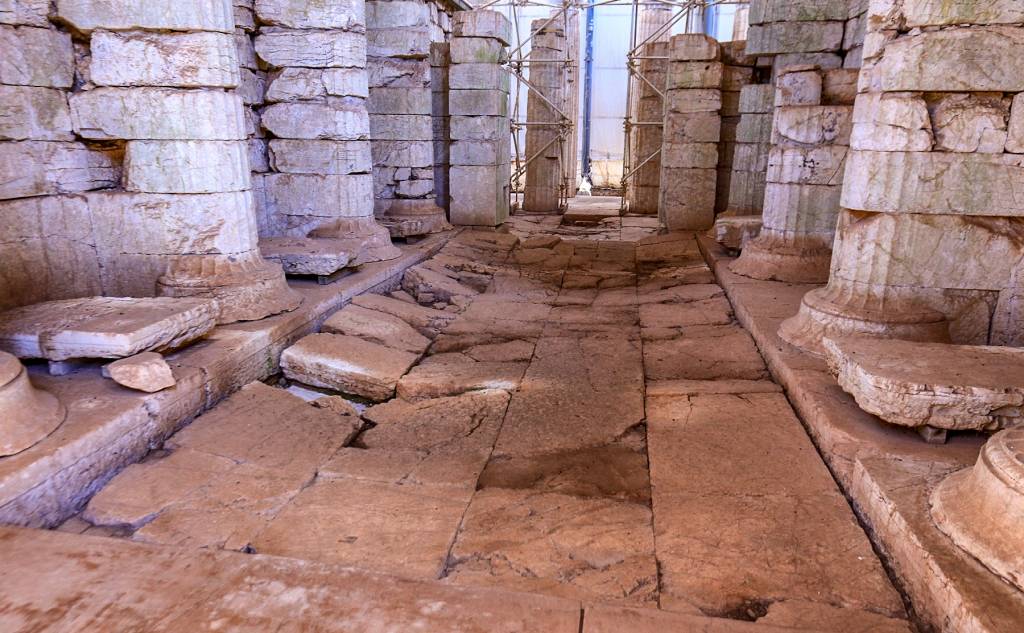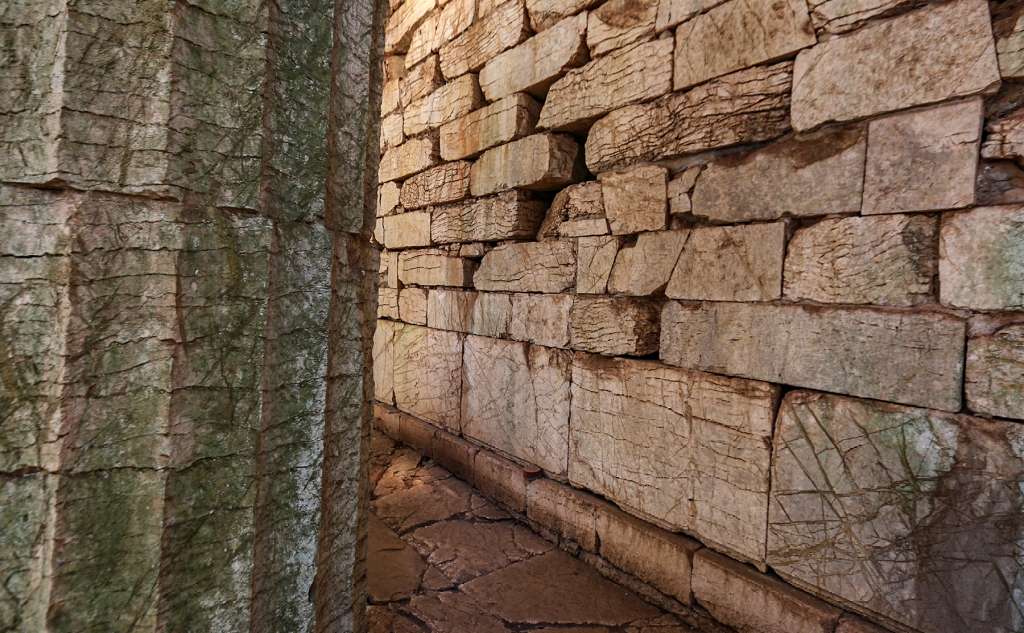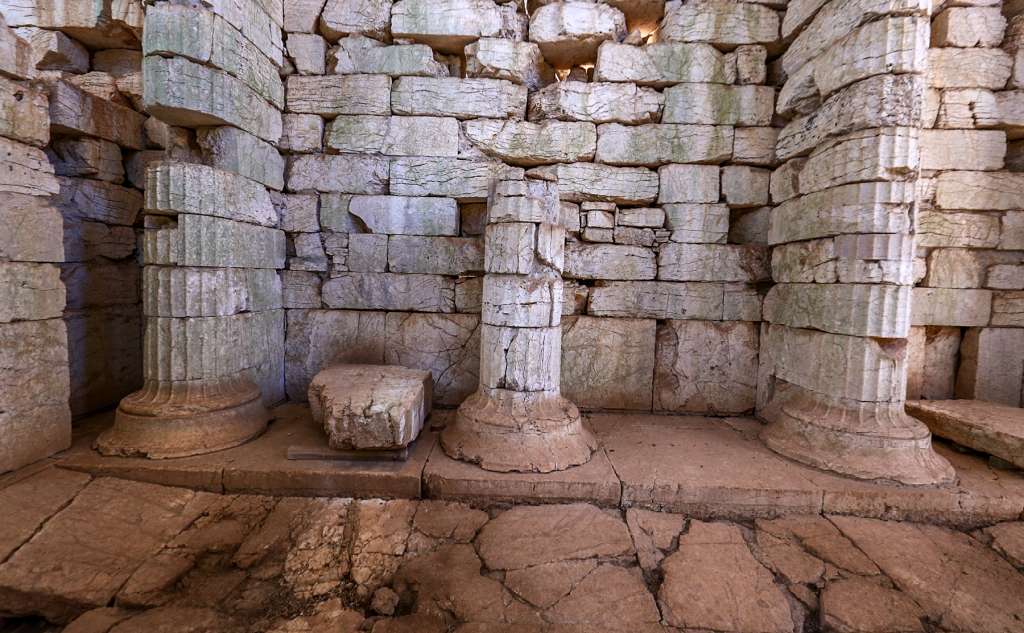The Epicurius Apollo Temple
The temple of Epicurius Apollo dominates the area in Bassae of Phigaleia at an altitude of 1,130 metres, on the borders of Arcadia, Trifylia and Messenia and is considered the "Parthenon" of the Peloponnese. It is one of the most important and imposing temples of antiquity and the first monument in Greece to be declared a World Heritage Site by UNESCO in 1986. The cult of Apollo in the area of Bassae dates back to the late 8th-early 7th century BC., and the god bears the epithet "Epicurius" because, according to tradition, he helped the Phigales in their fight against the Spartans in 659 BC. According to another version, the name is because Apollo prevented the spread of an epidemic that hit the area during the Peloponnesian War. Also, in an inscription found in the area, Apollo is also referred to as "Bassaetas".
The temple that the visitor sees today is not the oldest that was built on the site. The first temple of Apollo was built at the end of the 7th century BC., probably in the same place. The temple of Epicurius Apollo was constructed in 420 - 400 BC, and its architect is considered to be Iktinos. The temple is characterised by several originals both in its external and internal layout and is the only one that combines elements of all three architectural rhythms of antiquity. Light-coloured local limestone has been used for its construction, while some parts of the ceiling, the capitals of the nave and the sculptural decoration are made of marble. It is a Doric pavilion temple with a portico with two antae framing two columns, a nave, a sanctuary, and a back building. Inside the nave, along the long sides, there are 5 Ionic semi-columns, and between them, there was a column that bore the oldest Corinthian capital known today. We have known this capital since it was depicted in the drawings of the first travellers. Its fragments are kept in the National Archaeological Museum in Athens. The church roof is gabled, and the ceramic tiles are marble of Corinthian type.
Externally, the temple contained a Doric frieze with plain metopes and triglyphs, while only the inner metopes of the narrow sides were decorated in relief. The six metopes of the pronaos depicted the return of Apollo from the Hyperborean (very northern) countries to Olympus and the ones in the back, the abduction of the daughters of Messenian king Leucippus by the Dioscuri. It is not certain that the gables had sculptural decoration. The main decorative element of the temple was the Ionic marble frieze inside the nave (with a total length of 31 metres) which consists of 23 marble slabs. Twelve plates depict the Amazon Battle, and the remaining 11 the Centaur Battle.
In the 2nd century AD, the site was visited by traveller Pausanias who described the ancient monuments and saved helpful information about their history, especially about the temple of Epicurius Apollo. In fact, he considers it the second, Peloponnesian temple in beauty and harmony (8.41.8) after the one found in Tegea. In the following centuries, the sanctuary was abandoned and suffered severe damage from earthquakes that hit the area. The site remained abandoned until the 18th century when French architect, J. Bocher, identified it. In 1812, the first excavations were carried out by a group of archaeological scientists where the 23 marble slabs from the internal frieze of the temple, which were transported from the temple to the shores of the Ionian and from there to Zakynthos, were brought to light. In 1815, they ended up in the British Museum when the frieze was bought at auction. From 1902, systematic research was undertaken by the Archaeological Society, where other parts of the Ionic frieze, which are kept in the National Archaeological Museum, came to light. Since 1965 and systematically since 1982, the Ministry of Culture has undertaken the difficult task of maintaining and restoring the temple of Epicurius Apollo. Finally, since 1987, the temple has been protected from adverse weather conditions with a special canopy that will be removed after completing the necessary works.




